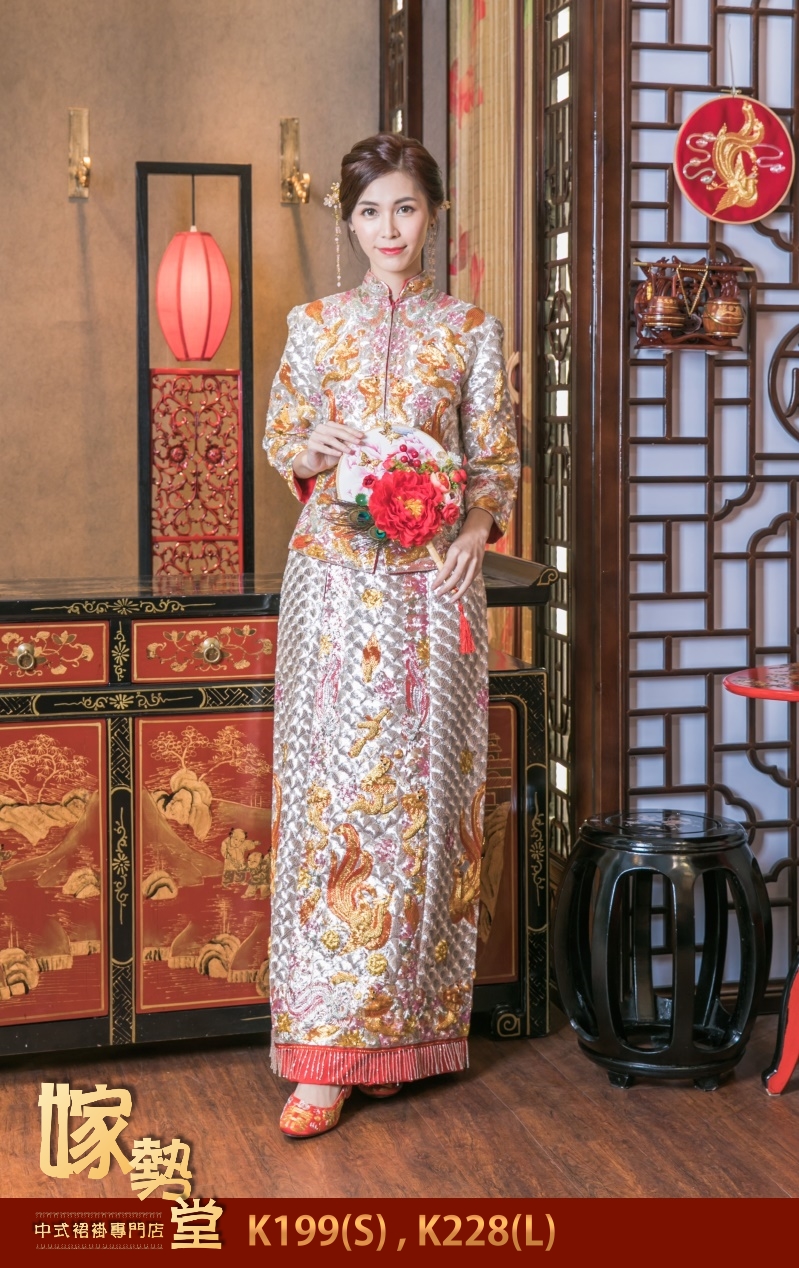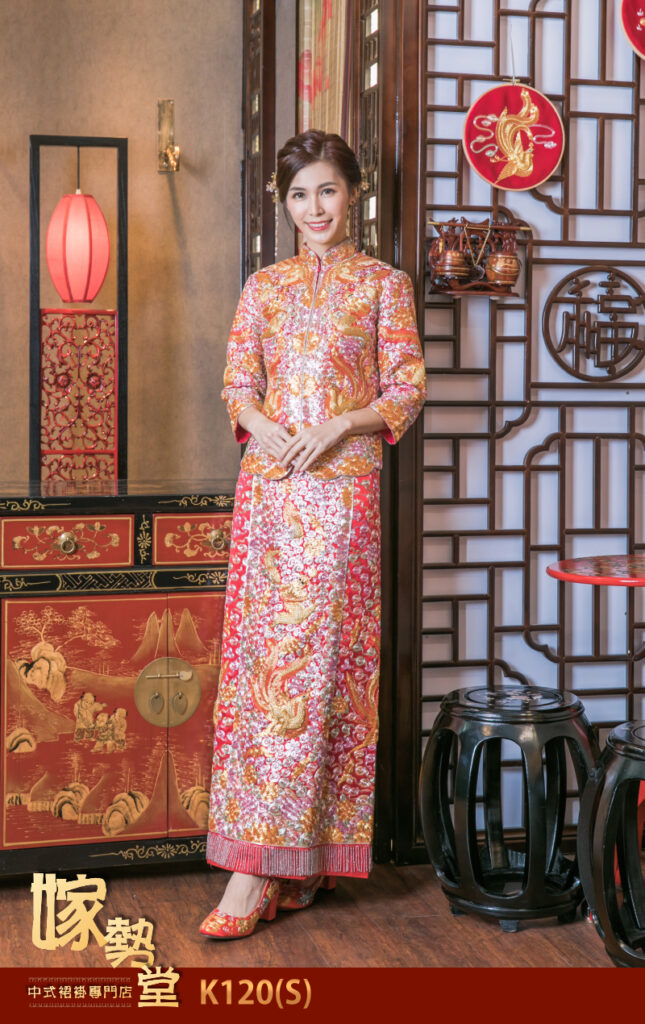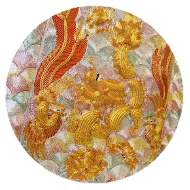Uncovering the Chinese Elegance – the Category and Pattern of “Qungua”
After reading my previous blog, I am sure you must know the origin of Qungau and the implicated meaning of the designs of the top and skirt. In the post, we will dive deep more into the categories and the pattern of Qungua. Tell you a little secret, you may know the bride’s social status when you see her Qungau. If you want to know the reason, just keep reading this post!
The Qungua Categories
Traditionally, the grades of Qungau are divided into five standard categories according to the density of the gold and silver embroidery. “Gua Huang” was one of the categories, with almost 100% gold and silver thread; “Gua Hou” had 80% to 90% gold and silver thread; “Da Wu Fu”, “Zhong Wu Fu”, and “Xiao Wu Fu” had 70%, 60%, and less than 50% gold and silver thread, respectively. As its name suggests, the price of “Qua Huang” is the greatest because it has the maximum density of threads and demands a more sophisticated method from the tailor to embroider. If created manually, a typical “Gua Huang” costs at least $1200. Therefore, you can presume the social status of the bride or her husband if you see a bride wearing a Qungua that you can barely see red colour.





*Photos from Marryhall.com
Yet, as time went by, the Qungua’s options expanded to include more contemporary styles like the Diamond Qungua, Crystal Qungua, and Sequin Qungua, indicating that the Qungau incorporated the aforementioned components to make it appear more elegant.
The Patterns and the Meaning
The Qungau’s patterns are one item that hasn’t altered throughout time. Generally, the typical decorations included a pair of Dragons and Phoenix, Clouds, Pomegranates, a pair of Mandarin ducks, the Moutan, five Bats, and a pair of Goldfishes. These patterns’ meanings come from Chinese idioms or homophone puns between Chinese characters. The following are the implications:
Dragon and Phoenix: From the idiom “Long Feng Cheng Xiang,” which wishes the couple to love entirely and be stable.

Clouds: Refer to being stable and free of obstacles

Pomegranate: Pomegranate has many seeds, and the pronunciation of seed in Cantonese or Mandarin is the same as that of “son.’ Thus, this pattern aims to bless couples to have more kids after marriage.

Mandarin ducks: There is an idiom in Chinese saying that Mandarin ducks play in water in lakes. This pattern blesses couples to have fun and enjoy their life after marriage.

Moutan: Related to wealth.

Bats: The pronunciation of bat in Cantonese or Mandarin is the same as that of “luck.” So, this graphic blesses couples to have luck.

Goldfishes: The pronunciation of fish in Cantonese or Mandarin is the same as that of “remnant.” So, this decoration implies “More than enough.”

A little trivia: some Christian and Catholic brides think they can’t wear Qungua as their wedding attire because they are prohibited from worshiping idols. The Dragon and Phoenix pattern on the Qungua violates their taboo. Therefore, there is a type of Qungua only with flower decorations named “Hua Gua,” which allows the brides who are Christian and Catholic can still enjoy wearing the traditional Chinese wedding gown.

After the Gua...
Near the end, Qungua is first introduced. I hope you find this interesting! The Qungua, however, is just one element of the Chinese wedding costume. There are more things to discuss. If you want to find out what the next thing is, don’t miss my next post!
